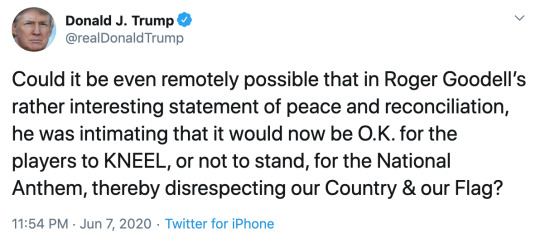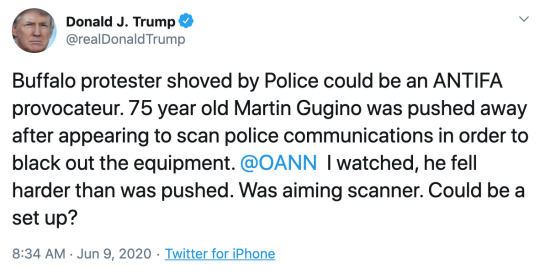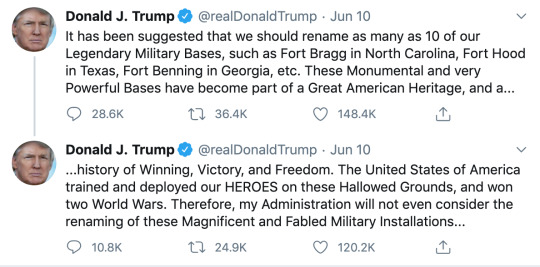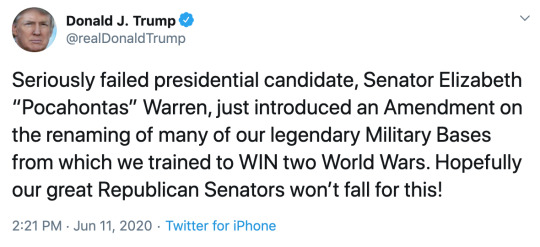#in fact it’s pretty clearly communicated in issue number 14 of this very series (and touched upon again in issue 15)
Text
Doki Doki’s Problems, and How to Fix Them
There’s going to be spoilers, so this’ll be under the cut.
So, naturally, the problems begin with Mana. Not just from a character perspective though, but from a narrative perspective. Let’s tackle them one at time.
Character perspective; I honestly don’t mind them moving away from the deeply flawed protagonists of Tsubomi and Hibiki. I really don’t! Shifting back to a protagonist like Love is perfectly fine and keeps the season a bit different from the two that came before it. Part of the problem, though, is that they seemed to think Love had no flaws. But of course she had flaws. She could be stubborn, she could be childish, she could be naive, she could be scared of things like thunderstorms, she could have issues communicating with people like Daisuke, etc.
Now, most of these aren’t dominant issues and only show up every now and again. But they are definite character flaws that pop up several times throughout the series, sometimes the episode revolving around them, sometimes in subtle ways. The point is that they’re absolutely there.
Mana... doesn’t really have them. She’s a bit similar to Love on the surface, but one of the key differences is that she has basically no weaknesses. (Being bad at singing doesn’t count.) Everyone loves her, she pretty much always gets her way, and everything ends up going her way at the end. She is little internal struggle with Mana, or really any conquering deficits to become a better person, like pretty much every single Cure before her.
This is especially frustrating because there are a couple angles that you could take. For instance, have Mana have something of an identity crisis, wondering if her desperate desire to help people isn’t born from some kind of selfishness. This doesn’t need to be true, and won’t be of course, but that level of introspection and internal struggle is exactly what you want in a good Precure character.
Let’s now talk about her from a narrative standpoint.
One thing that’s worth noting is that she hogs the dramatic speeches. Dramatic speeches are actually really important in Precure, because they can be turning points and key moments for a character to show what they’ve learned, where they’ve gotten where they are, and how they’ve become stronger. Now, some seasons can do well without them- Smile is the best example- but typically they’re going to be very useful for characterization.
Mana, though, gets most of them. Even though out of the cast she probably has the weakest character. People talk about a Pink Cure bias but it goes to an EXTREME with Mana. Literally everyone has a crush on her and adores her, including the writers. This, really deprives the other characters of their time to shine.
What also deprives them of their time to shine is focus episodes. I did the math for Doki Doki and here is what I found. It’s worth noting that the numbers aren’t going to add up exactly because there were various episodes that out of charity I put “misc” since they didn’t have a clear focus, and clearly split episodes I added to each character.
Mana: 16/50 (32%)
Rikka: 6 (12%)
Alice: 5 (10%)
Makoto: 7 (14%)
Aguri: 9 (18%)
I want you to look at that ratio. If you take the two other highest characters in terms of character focus, you manage to only reach par with Mana. While characters have had that high a ratio before (Passion has 35%), the skew alone is ridiculous; while Miki and Buki are heavily neglected, Love is still in the 30s.
Another issue is the lag. Alice and Makoto should in no way have significantly less episodes than Aguri, who shows up first in episode 22, for crying out loud. The issue is that after roughly the 20 episode mark, Makoto and Alice just... stop getting any screentime, and if anything Rikka has it worse. The complete imbalance in the plot by having Aguri enter so late manages to also deprive three characters (Makoto being the best in the series) of any real narrative focus after they appear.
It doesn’t help that there are episodes like 6, which is supposed to be about Cure Sword becoming part of the team, that instead heavily become about how awesome Mana is. Episode 14 is nearly robbed from Rikka, the focus being split to the point that it feels like both party’s resolve is almost equally required to defeat the monster. She can’t help but even intrude on decent character episodes because the show needs to be all about her.
Secondly, there’s been arguments that Aguri needs more focus. I completely disagree, as you might guess from my calculations above. But what I do agree with is that she needs to show up earlier. Episode 22 is freaking insane and I don’t recall any Cure that appears that late except maybe Cure Muse, and it was a mistake when they did that too. Regina has a similar problem; she only shows up in Episode 12.
This might not be AS bad if she wasn’t brainwashed in... well, episode 22. I think you could maybe argue that there is room for a fakeout with this trope, but you both need to make Aguri a better character (I’m totally not bitter that she basically has the exact same narrative purpose as Makoto but more efficient, not at all...) and you need to allow the audience to have further attachment to her. Eas shows up in Episode 1. Siren shows up in episode 1. Splash Star and Futari Wa do their own thing, but those characters also have far more room to interact more or less every episode with the Cures than the other three characters do.
My point is that the audience doesn’t really have much reason to be attached to Regina. Unlike Siren and Eas, they don’t really have enough of a human element to them for you to really connect with, and the relationship with Mana is ridiculously rushed. Instead of cutting it so close with roughly 7 episodes, put her in the beginning. Put Aguri in there too, though more as brief cameos. If you want to keep the “switch sides” thing, make it a fake-out. It’s a facade she’s put on for various reasons- she can’t let go of selfishness, she wants to make her father proud, whatever you want. Then you can have that twist on the formula you want without the brainwashing plotline, and she doesn’t have to disappear for over a dozen episodes and can instead be going through character growth.
Also, though I love her, I’d change Makoto’s arc. The transition from “Loner” to “Teammate” is simply too rushed. If you want to make her a loner Precure, do something similar to Muse or Moonlight. Don’t have it take dozens of episodes of course, but have regular interactions to cause her to warm up to the girls, and then officially join in 10 or so. You have a good balance, and have had plenty of episodes to focus on her. Because, seriously, the fact that she has less than somebody that joined nearly 20 episodes later is criminal.
Also, I mentioned this earlier, but Makoto and Aguri simply shouldn’t have the same narrative focus. They shouldn’t. It’s lazy, and it completely robs one character of importance and leaves her out in the cold for the rest of the story. Have Makoto or Aguri’s gig be something else, or make them complimentary, or something. Having one dominate over the other narratively makes it feel more like Aguri’s character was made up on the fly, and they stole Sword’s conceit last minute.
This is a slightly less important point, but still kind of important to me, the characters who aren’t Cures need to be given more screentime. I really like Smile, but it suffers from what I call the “Dead World Problem”. So many of the episodes are focused on the Cures, and just the Cures, and any supporting characters are basically cast aside. Some of the best written seasons manage to balance the two, having episodes about other characters that also manage to say something about the Cures in question; Heartcatch is quite good at that, as are Futari wa and Splash Star, and Fresh to a lesser extent.
You don’t see that here. The fairies are even left aside compared to their usual treatment, with only 2 out of 5 being relevant. Charles and Raquel got one episode each and Lance didn’t even get that. The parents were also mostly forgotten. Then again this is the only season where all the girls are single children and without parents (except Mana!), so whatever.
Aside from the Cures and their very few family members, the villains and almost no other character ever got focus. Aside from arguably Regina, the villains often felt pretty dull because there wasn’t enough emphasis on giving them memorable personalities. Other series would have non-Cure friends who would get the occasional episode, or focus on some other minor character, or just have some regular humans do something. Reina, Eru and Jun are nice but that’s just three of them, and more importantly they barely do a thing aside from their focus episodes. Having Cures interact with people who aren’t their families, fairies, villains or other Cures won’t kill them; in fact it could really fit well with the concept of Mana helping others. The Heartcatch girls sure cared more for the people they helped than HER, for one.
I may find more things I like when I watch it again (will try to!) or find that my criticisms don’t really apply. But it’s how I feel right now.
2 notes
·
View notes
Text
Barry’s Musings “Deception Index”: Would George Floyd Dub Trump’s Response to His Death “A Great Thing?”
By J. Gerard Legagneur, Esq., June 15, 2020
Recent events have inspired this timely installment of Barry’s Musings’ Deception Index. The “D.I.” will serve as its own version of The Washington Post’s esteemed fact-checking service, providing analyses of events that WaPo might lose in the shuffle, given the sheer volume of dubious Trump administration statements.
Washington D.C. – On Friday, June 5th, in the midst of the civil unrest following the murder of George Floyd at the hands of Minneapolis police officers, President Trump took to the Rose Garden podium to do a victory lap over better-than-expected job numbers. Rather than “meeting the moment” by offering healing, thoughtful comments regarding racial injustice, Trump elected instead to clumsily claim that he should be revered as a champion for black folks whenever the U.S. economy improves. In a stunningly callous, tone-deaf statement, Trump went on to muse that George Floyd would be praising Trump from the Pearly Gates:
"Hopefully George is looking down and saying this is a great thing that's happening for our country. [It's] a great day for him. It's a great day for everybody… This is a great, great day in terms of equality."
So, the question then becomes, would George Floyd approve of the actions Trump has taken in the wake of his untimely murder?
THE FACTS
1. George Floyd was murdered on May 25, 2020 as the result of a callous, emboldened Minneapolis cop using his knee to press Floyd’s neck into the pavement for 8 minutes and 46 seconds. Floyd laid there handcuffed, unarmed, submissive and pleading to his late mother for deliverance.
2. Trump’s past problematic relationship with racial issues has been well-documented.
3. Fast-forwarding to the immediate aftermath of George’s Floyd’s murder, Trump made some initial, cursory comments acknowledging that he had seen the video footage and considered Floyd’s death to be a “very sad event.” Trump also had a telephone call with Floyd’s family but apparently didn’t let them get a word in edgewise. Lastly, his campaign released a “tribute” video that was subsequently blocked by Twitter due to copyright violations. The video starts off as an apparent homage to George Floyd and the protests that followed, but after the first 56 seconds it becomes readily apparent that its intent is to both shine a bright light on the handful of rioters and praise law enforcement in general.
4. On May 29th, just four days following Floyd’s murder, President Trump tweeted out a message that labeled protesters as “thugs” and included a precedented dog whistle that fantasized a violent response: “When the looting starts, the shooting starts.” This remarkably blatant threat of lethal force caused Twitter to flag Trump’s offending tweet for the first time ever.

5. Three days later, on June 1st, Manbaby President Trump sought to reclaim the news cycle by notoriously posing outside St. John’s Episcopal Church while holding an upside down (and backwards) Bible. The photo op conveniently followed the clearing (and gassing) of peaceful protesters in Lafayette Square who would have otherwise caused Trump to hear mean things while he walked to the church. These unprecedented actions spurred condemnation and apologies from a slew of past and present military stalwarts, including the current chairman of the Joint Chiefs of Staff, Mark Milley.
6. On June 5th, Trump retweeted a video of Glenn Beck and Candace Owens attacking the late George Floyd and impugning his character.
7. That same day, Trump once again took to Twitter to criticize Drew Brees for walking back his comments about kneeling during the National Anthem:

One should recall that kneeling during the National Anthem was a movement sparked by then-quarterback (and subsequently, summarily shunned) Colin Kaepernick to call attention to… wait for it… police brutality.
8. Two days later, Trump doubled down on his anti-kneeling rhetoric by calling out NFL Commissioner Roger Goodell via tweet:

9. As peaceful protests about black lives mattering continued outside the White House, a panicked Trump hid in an underground White House bunker. In typical Trump fashion, #DonTheCon subsequently lied about the incident by insisting he was merely “inspecting” the underground stronghold, only to be belied by his own Attorney General William Barr days later. Trump also ordered that a fence be built around the White House to protect his safety (and, no, Mexico did not pay for this one either).
10. Ironically (and sadly) camera phones have been capturing images of police officers brutalizing citizens who are peacefully protesting against police brutality. (Yes, you read that right.) One such victim was Martin Gugino, a 75-year-old man who was pushed to the ground by the police in Buffalo, New York, resulting in a bloody head injury and hospitalization. As if living in Bizarro World, the President of the United States responded in the most unsympathetic and bonkers way possible by sharing a depraved, ludicrous conspiracy theory with his 80 million Twitter followers:

Coincidentally (or not), the hashtag #TrumpIsNotWell has been trending on Twitter for the past several days…
11. To add insult to injury, Trump reignited his ardent defense of Confederate history, icons and symbolism via a series of tweets, one of which included an ad hominem, racist slur hurled towards Elizabeth Warren that Trump seems to relish.



12. Amidst the protests taking place throughout the country (and the world) Trump fired off a series of tweets in which he claimed (without factual basis) that he’s “done more for Black Americans… than any President in U.S. history, with the possible exception of another Republican President, the late, great, Abraham Lincoln.” (emphasis added) Trump iterated this claim during a Fox News interview on Thursday, June 11th, but added the following bizarre caveat: “[L]et’s take a pass on Abraham Lincoln because he did good, although, it’s always questionable, you know, in other words, the end result.”
Yes, you read that right. Still in doubt that Trump said this? You can watch the video for yourself. Trump called the “end result” of Lincoln’s actions “questionable.” Thankfully, the black Fox News interviewer, Harris Faulkner, was quick to remind Trump of what the “end result” was: “Well, we are free, Mr. President. So, [Lincoln] did pretty well.”
13. Trump bragged about how police and military forces “easily” dispatched the peaceful protesters in Lafayette Square, referring to the Secret Service as (this is not a joke) the “SS.” Yes, that really happened—you can’t make this shit stuff up.

14. As a final, double-barreled “F.U.” to the black community, President Trump decided to hold his first campaign rally (notwithstanding the subsistence of the Covid-19 pandemic) in Tulsa Oklahoma, the site of the largest massacre of African Americans in U.S. history, on June 19th, aka “Juneteenth”—the anniversary of the day when the last slaves were notified of their freedom under the Emancipation Proclamation. Clearly, either the president made his scheduling decisions purposefully or he doesn’t have a single black person around him (by design) to tell him how insanely offensive this move would be. Following backlash, Trump subsequently rescheduled his rally, but the damage had already been done in the black consciousness.
15. Lastly, we at the D.I. have it on good authority that George Floyd would rather be alive today than “looking down” and ruminating over Trump’s perceived “successes” with the black community.
The DECEPTION INDEX
When taken altogether, the foregoing leads the D.I. to only one conclusion regarding Trump’s claim that George Floyd would look upon his response to Floyd’s death with anything but utter shock, disgust and contempt. As a result, the Barry’s Musings Deception Index awards Trump’s claim with four Arnold “Side-Eyes”. (We only wish we had more side-eyes to give…)

Gerard Legagneur is a career corporate attorney dedicated to the use of sarcasm to advance sociopolitical awareness. Legagneur graduated with Honors in Economics from Harvard University and received his J.D. from Columbia Law School.
Follow me on Twitter @JGerardInc!
#political satire#satire#humor#fake news#Donald Trump#racism#bigotry#police brutality#george floyd#black lives matter#blm#facts matter#protests#deception index
0 notes